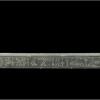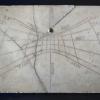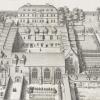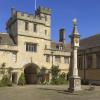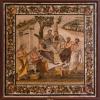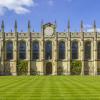Sundials
Commentary
The mother of all timepieces is the heavens. The apparent motion of the sun marks out days and years. That of the moon marks out the months. And although hours are human inventions (created to divide the day into smaller units), they too are typically linked to sunrise, sunset, and especially noon, when the sun is at its highest point.
The most ancient timepieces were therefore sundials. Their function was simply to help measure time by mark the changing position of the sun with more precision. Gnomonics – the art of crafting sundials – was already well developed in antiquity and underwent a marked renaissance in the sixteenth and seventeenth centuries. This period’s fascinating with elaborate sundials is well represented both in Oxford colleges and in the History of Science Museum, which has the world’s richest collection of Renaissance diptych dials.
In the Mediterranean world, the most obvious limitation of the sundial is that it could only work during daylight hours. In northern Europe, an additional limitation occurred when the sky was overcast. These limitations prompted the development of other means of keeping time not reliant on the sun.
Resources for understanding the basic principles of gnomonics are abundantly available online.
(1) Further material on ancient sundials and sundials in Oxford is available elsewhere on Cabinet.
(2) Introductory videos from the Museo Galileo in Florence provide brief overviews of
- The history of the sundial, from ancient Egypt to Renaissance Europe;
- Basic principles of sundial construction; and
- The Museo Galileo's own monumental sundial built in 2007.
(3) Other introductory materials include
- How sundials work: a more detailed account, from the British Sundial Society;
- Sundials in Renaissance Europe: further materials from History and Philosophy of Science in Cambridge (1999); and
- Sundials on the Internet: a collection of further resources.
Images 1-2. The splendid sundial over the entrance to the Library of All Souls College, dating from 1658, was designed by Christopher Wren, who had been a fellow there since 1653. Interestingly, it links his duties an astronomer with his more famous later work as England's first great baroque architect. As as Savilian Professor of Astronomy in Oxford (1661-9), he was obliged to lecture on gnomonics, which also featured in the ninth of Vitruvius's Ten Books on Architecture, because a thorough understanding of the movement of the sun across the heavens at different latitudes and seasons of the year was crucial to keeping buildings warm and illuminated in the winter but cool in the summer.
Image credits: 1: southern facade, Codrington Library, All Souls College, Oxford; photo by Andrew Shiva, 15 April 2014; Wikimedia Commons; CC BY-SA 4.0. 2: Photo by Robin Stevens, 20 February 2010. Licence: CC BY-NC-ND.
Commentary: Howard Hotson (October / December 2016; May 2024)

